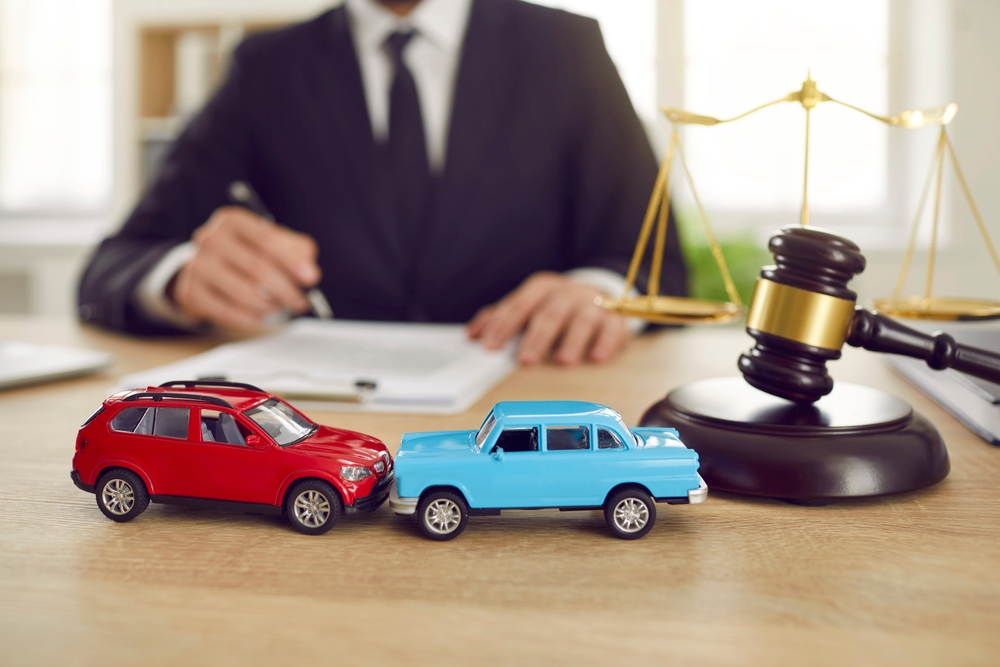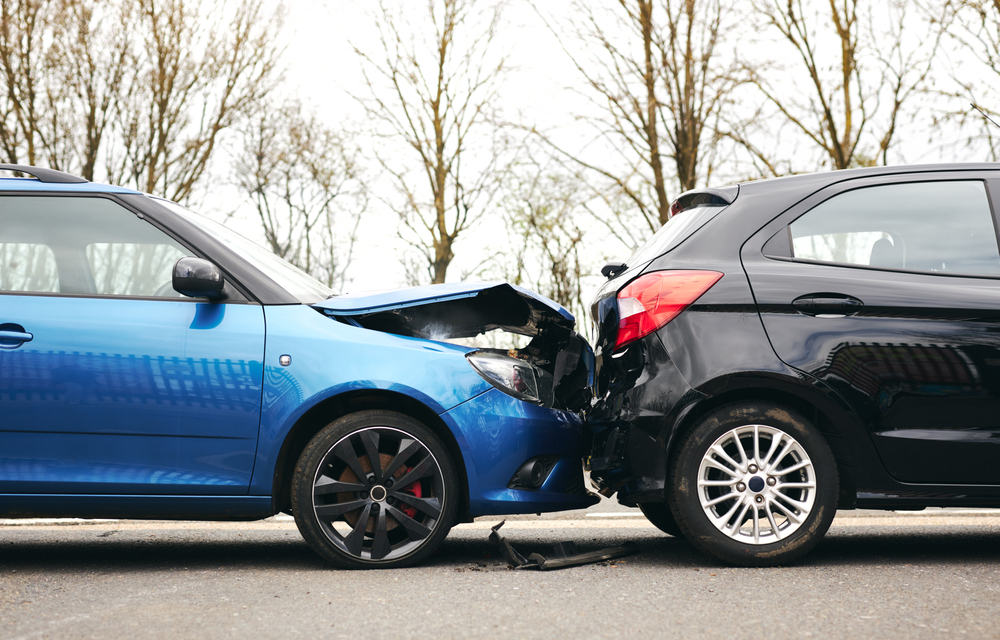Rear-end collisions are one of the most common types of car accidents in Las Vegas and across the U.S. While these crashes often seem straightforward, determining legal fault can be far more complex than simply blaming the driver who struck from behind. Understanding who is at fault in a rear-end collision is essential for recovering compensation for damages, medical bills, and lost wages.
At Vegas Valley Injury Law, we’ve helped countless clients navigate the legal aftermath of rear-end collisions. This guide will explain how to determine fault in an accident, the type of evidence that matters, and what to do after an accident.

Who Is Typically at Fault in a Rear-End Collision?
In most rear-end crashes, the rear driver is presumed to be at fault. That’s because traffic laws require drivers to maintain a safe following distance. If someone hits you from behind, it often means they were driving too closely or weren’t paying attention.
However, this presumption isn’t always automatic. There are exceptions where the front driver may be partially or entirely to blame, depending on how the crash occurred.
The Presumption of Rear Driver Negligence
Insurance companies and courts generally start with the assumption that the rear driver failed to:
- Leave enough space to stop safely
- Pay attention to road conditions or traffic flow
- React appropriately to sudden changes in traffic
This presumption is usually valid if the lead vehicle was stopped at a red light, stop sign, or in slowed traffic when hit.
When the Front Driver May Be at Fault
When is a rear-end collision not your fault if you were the driver in the back? There are several circumstances where the lead driver may share or carry fault, including:
- Sudden and unnecessary braking without a reason
- Broken or non-functioning brake lights, giving no warning
- Cutting into a lane too closely, leaving no room for reaction
- Stopping in a live lane of traffic without hazard lights or explanation
These situations can shift some or all liability to the front driver, especially if there’s evidence like dashcam footage or third-party witness statements.
How Fault Is Legally Determined After a Rear-End Crash
While assumptions exist, actual liability in a rear-end crash is based on evidence, testimony, and legal standards. Here are some examples of each:
Traffic Laws and Citations
Police citations carry weight in determining fault. If the rear driver is ticketed for following too closely, speeding, or distracted driving, this will usually strengthen the case against them.
However, a citation isn’t the final word—especially if both parties received tickets or if the police report includes conflicting statements.
Statements from Drivers and Witnesses
When determining who is at fault in a rear-end collision, the words you say at the scene matter. Admissions like “I didn’t see them” or “I was texting” can be used against you. On the other hand, witness testimony—especially from neutral third parties—can be valuable in supporting your version of events.
Surveillance, Dashcam, and Vehicle Data
The following evidence can be critical in challenging assumptions about fault:
- Dashcam videos can capture sudden stops, turn signal usage, or a car cutting you off
- Surveillance footage from nearby businesses or traffic cameras may support your claim
- Vehicle black box data can show speed, braking patterns, and impact force
Accident Reconstruction Experts
In more serious or disputed cases, attorneys may bring in accident reconstructionists. These experts analyze skid marks, vehicle damage, impact angles, and road conditions to recreate what happened and support your claim in court.
Common Causes of Rear-End Accidents
Rear-end collisions happen in a variety of everyday scenarios. Understanding these causes can help clarify fault and prevent future accidents.
Distracted Driving
Unfortunately, this preventable behavior is the leading cause of rear-end crashes. Whether texting, eating, or adjusting the radio, distracted drivers often fail to notice slowing traffic ahead of them.
Speeding
Excessive speed shortens reaction time and increases stopping distance. Speeding drivers are far more likely to rear-end another car in traffic slowdowns or sudden stops.
Tailgating (Driving Too Close)
Following too closely gives you almost no time to react if the car in front brakes suddenly. Nevada law requires drivers to maintain a safe following distance at all times.
Weather Conditions
Rain, fog, or sandstorms can reduce visibility and traction. Even if you were driving cautiously, failing to adjust for road conditions could make you liable in a crash.
Brake Failure
Although rare, mechanical failures like worn brake pads or faulty brake systems can cause accidents. However, drivers are still expected to maintain their vehicles, so this may not always absolve them of liability.
Drunk Driving
Driving under the influence significantly slows reaction times and impairs judgment. Alcohol-related rear-end crashes often result in severe injuries or fatalities, opening the door to punitive damages.

What Evidence Do You Need to Prove Fault?
Whether you’re filing a claim or defending yourself, the right evidence can make or break your case—especially when a rear-end collision is not your fault and you’re the driver in back. After a rear-end crash, collecting and preserving documentation is essential.
Photos of the Scene and Vehicle Damage
Take wide and close-up shots of:
- Vehicle positions before they’re moved
- Skid marks or debris
- Traffic signs and signals
- Damage to both vehicles
Photos can tell a clear story about what happened, especially if there’s front-end vs. rear-end damage alignment.
Police Reports and Medical Records
Always file a police report—even for minor accidents. These reports include:
- Officer observations
- Citations issued
- Diagrams of the crash scene
- Statements from drivers and witnesses
Also, keep detailed medical records to prove that injuries stemmed from the accident. This supports your personal injury claim and may determine how much compensation you receive.
Witness Contact Information
Eyewitness accounts offer a neutral third-party perspective. If someone saw the crash, ask for their name and contact information. They may be willing to provide a statement that supports your version of events, which can be especially helpful in complex collisions involving multiple vehicles.
Can You Be Partially at Fault for a Rear-End Crash?
Yes. Nevada follows a modified comparative negligence rule. This means:
- You can still recover compensation if you were less than 50% at fault
- Your total award is reduced proportionately by your percentage of fault
For example, if you’re awarded $100,000 but found 30% at fault, you’ll receive $70,000.
This rule highlights the importance of strong legal representation. An experienced personal injury lawyer in Las Vegas can help limit your share of the blame and maximize your recovery.
What to Do After a Rear-End Accident
Taking the right steps after a crash protects both your health and legal rights. Here’s what to do:
Seek Medical Attention Promptly
Even if you feel fine, some injuries—like whiplash or concussions—don’t show symptoms right away. Early treatment:
- Documents injuries tied to the crash
- Strengthens your personal injury claim
- Helps rule out delayed complications
Contact Your Insurance Company
Notify your insurer quickly—but be careful what you say. Stick to the facts and avoid admitting fault. A recorded statement could be used against you.
Speak to an Experienced Car Accident Attorney
Before talking to the other driver’s insurer, consult with a legal professional. A car accident lawyer who specializes in rear-end collision cases can:
- Guide you through the claims process
- Help gather evidence
- Negotiate with insurers on your behalf
Why You Should Choose Vegas Valley Injury Law for Rear-End Accident Claims
At Vegas Valley Injury Law, we’ve earned a reputation for aggressive advocacy and successful outcomes in rear-end collision cases. When you choose our firm, you benefit from:
- Decades of combined personal injury experience
- Proven track record of high-value settlements
- Local knowledge of Nevada traffic laws and legal deadlines
- Personalized legal strategy for every client
Meet the team that will guide you through your recovery, prove who is at fault in a rear-end collision, and secure the compensation you deserve for your injuries.
Schedule Your Free Consultation with Vegas Valley Injury Law Today
Don’t let assumptions about rear-end crashes jeopardize your recovery. Insurance companies often attempt to unfairly assign blame or minimize payouts.
Contact Vegas Valley Injury Law today to:
- Protect your rights
- Preserve crucial evidence
- Begin the path toward fair compensation
We offer free consultations, and you pay nothing unless we win. Call now or schedule online to get started.
Rear-End Accident FAQs
1) What if both drivers claim the other was at fault?
This is common. In these cases, determining who is at fault in a rear-end collision hinges on evidence such as photos, police reports, dashcam footage, and witness statements. When liability is disputed, working with a skilled attorney is essential to building a strong case.
2) Can I still recover compensation if I was partially at fault?
Yes. Nevada uses a modified comparative negligence system. As long as you’re less than 50% responsible, you can recover compensation, though your award will be reduced by your percentage of fault.
3) How long do I have to file a claim after a rear-end crash?
Nevada’s statute of limitations for personal injury claims is two years from the date of the accident. However, the sooner you act, the easier it is to preserve evidence and build your case.
4) Should I speak to the other driver’s insurance adjuster?
No—not without legal advice. Insurance adjusters are trained to minimize payouts and may try to get you to admit fault. It’s best to consult an attorney before giving any statement.
5) Can I still sue if the car damage was minimal?
Yes. Even low-speed crashes can cause serious soft tissue injuries like whiplash. Don’t assume your injuries are minor just because the damage looks small.
6) Will my insurance go up after a rear-end collision?
It depends on fault and your policy terms. If you’re found at fault, a rate increase is likely. If the other driver caused the crash, your insurer may not raise your premiums—but every case is different.